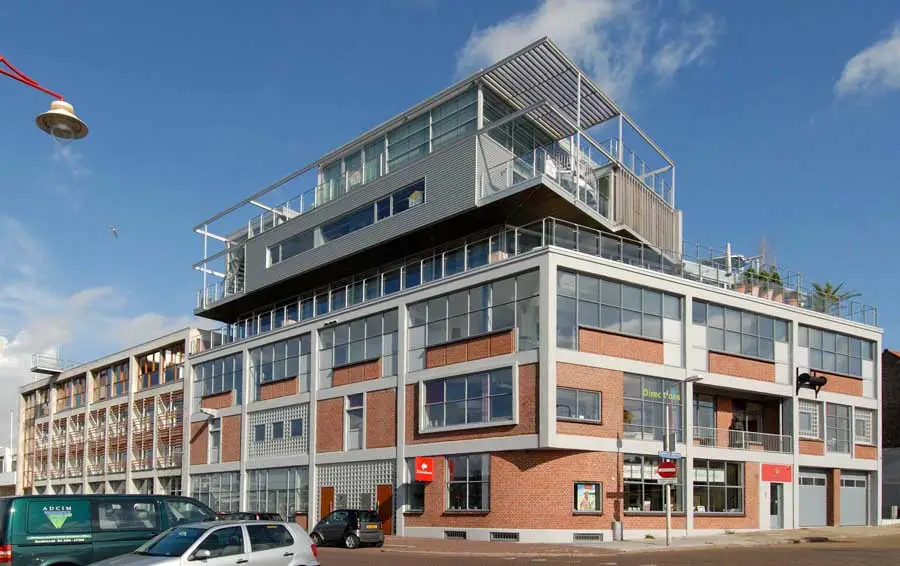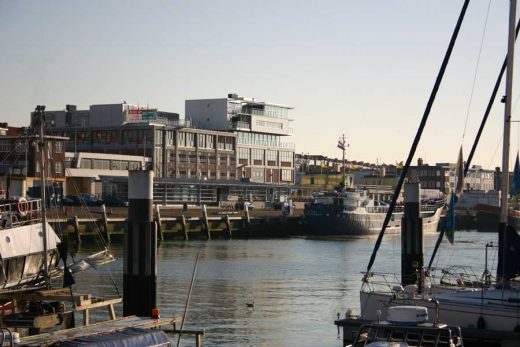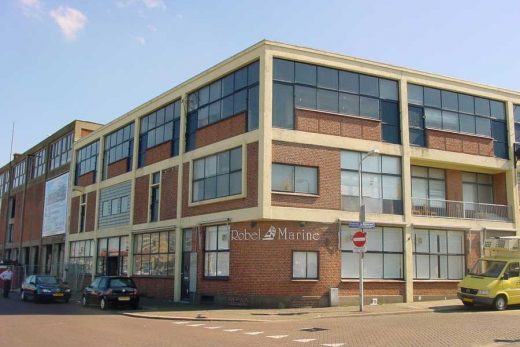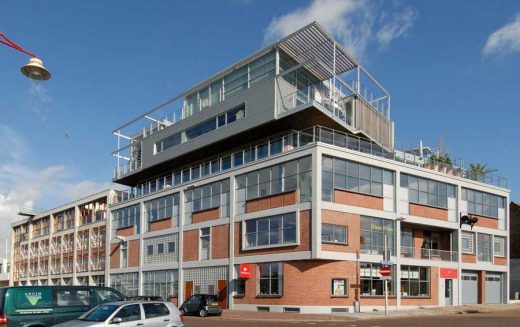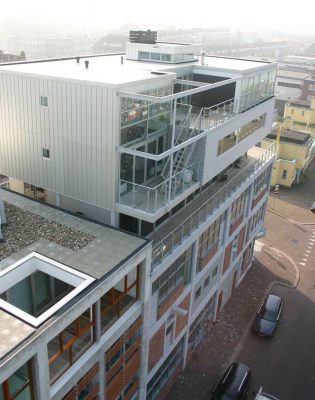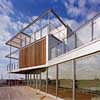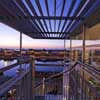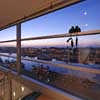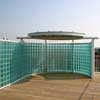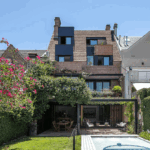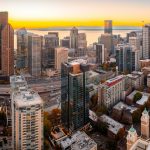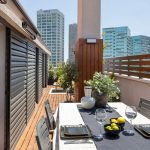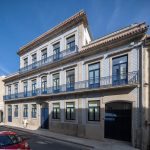Penthouses Nautilus Den Haag, Sky Building The Hague, Netherlands Projects, Dutch Architect
Penthouses Nautilus Den Haag : Architecture
Penthouses Building The Hague, Holland, Europe
post updated 27 September 2021 ; 20 Jan 2011
Date built: 2006/07
Architect: Eric Vreedenburgh – Archipelontwerpers
Nautilus sky borne buildings – The Hague
Penthouses Nautilus
The harbour of Scheveningen was originally a fishing harbour. In the course of time fishery declined in importance and so did the companies. As a result, many old warehouses in the Second Harbour became redundant and are now due for demolition. At the same time, there is a large demand for building ground in this area. By renovating the warehouses and placing steel penthouses on their rooftops, the harbour is given a new lease of life.
These projects in Scheveningen led to the discussion about rooftop housing (sky borne buildings) in Europe. The themes developed here in connection with type, technology and impact on urban design were later elaborated in several other projects.
The Harbour View penthouse designed 14 years ago by Archipelontwerpers, was the first step towards rooftop housing. The point of reference for this design was the presence of several robust warehouses with steel cooling plants on the roof. A two-storey, lightweight steel penthouse has been constructed on top of a brick base consisting of two structures that face one another (the socle). The construction comprises a frame of hot-rolled sections with a lightweight panel filling.
The penthouse was to be used as a home/office and/or studio. These demands were frequently modified and expanded during the building process. The penthouse consists of a single space occupying both storeys. Rooms like the bathroom and bedroom can be partitioned off by means of sliding partitions. The demands were as follows: the residents must be able to look out from the bath over the empty space and see the sea, and once they were out of the bath they must be able to follow different routes through the house.
Essential for this penthouse are the spacious terraces on different levels and the double route afforded by the two staircases. After the penthouse had been completed, Archipelontwerpers worked on the transformation of a number of warehouses that had been declared unusable and were due for demolition. Similar steel penthouses are placed on and above these warehouses (IJsvis, Nautilus and Rokerij). The Scheveningen harbour can thus become an example of stepping-stone urban planning.
The principle on which the stepping-stone strategy is based involves two aspects: 1) the formulation/identification of the theme, and 2) the transformation of the theme. It is thus not the case that themes are closed systems, like a Lego box, in which the explicit rules of play have to be taken into account in the search for variants.
The reverse is in fact the case. Because various similarities are introduced into diverse projects, and are also identified as such at a certain moment, a particular theme emerges as a pattern. This theme then serves as the starting-point for new variants. All variants also include many non-thematic aspects, variants and specific solutions, and repetition of these leads to sub themes. The themes evolve thanks to these transformations.
These aspects of emergence and evolution are the major difference in approach between Bernard Tschumi’s follies for Parc de la Villette in Paris – here the red follies could be configured precisely on the green grass within the blueprint of strict rules of play – and the façades that Palladio designed for three churches beside the Canale della Giudecca in sixteenth-century Venice.
The three façades are not identical, but in orientation and in composition, colour and material they have a lot in common.
It was above Palladio’s approach that was the reference for Archipelontwerpers in developing the stepping-stone strategy in Scheveningen. It was not until after they had received commissions from two different clients, followed after a while by a third, to design penthouses on top of an old warehouse that the opportunity spontaneously arose of playing a game of references, by which a certain theme was introduced, though all of this took place without the explicit formulation of any rules beforehand.
So the stepping-stone strategy is a game of references under construction rather than a developed system within which the rules of play have to be followed. Given the specific (technical) properties of every raised ground level and the at times highly personal preferences regarding the rooftop home, such tight rules would be undesirable. (see the publication: Rooftop Architecture, Ed Melet & Eric Vreedenburgh, NAi Publishers, ISBN 90-5662-363-X).
Nautilus sky borne buildings The Hague, Holland – Building Information
Architect: Archipelontwerpers – Eric Vreedenburgh, Coen Bouwmeester, Niel Groeneveld, Jaap Baselmans, Guido Zeck
Construction engineers: Broersma – Pim Beeking
Principal: KBM-Molenburg
Awards: European Aluminium Award 2007, Belvedere award, (Netherlands Ministry of Housing, Spatial Planning and the Environment), IPSV (Urban Renewal Innovation Programme), (Netherlands Ministry of Housing, Spatial Planning and the Environment), National Steel Prize 2006
Penthouses Nautilus Den Haag images / information from Eric Vreedenburgh – Archipelontwerpers
Location: Scheveningen, The Hague, The Netherlands, western Europe
Architecture in Den Haag
Another Den Haag building designed by Eric Vreedenburgh – Archipelontwerpers:
Baljurk Den Haag
Eric Vreedenburgh – Archipelontwerpers
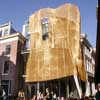
photo from architects
Baljurk Den Haag
Another Dutch building designed by Eric Vreedenburgh – Archipelontwerpers:
Steel Study House II
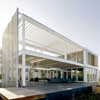
photograph : Marcel van der Burg
Steel Study House II
New Den Haag Buildings
Internationaal Dans en Muziek Centrum
Neuteling Riedijk Architects
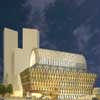
picture © Neutelings Riedijk Architecten
Internationaal Dans en Muziek Centrum Den Haag
Koningin Julianaplein
Office for Metropolitan Architecture
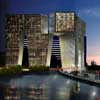
image courtesy of the Office for Metropolitan Architecture (OMA)
Koningin Julianaplein
Villa Dali, Vroondaal
123DV
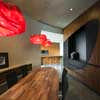
photograph : Christiaan de Bruijne
Villa Dali
Football stadium ADO
Zwarts & Jansma Architects

photo : Rob ‘t Hart
ADO Den Haag
Comments / photos for the Penthouses Nautilus Den Haag Architecture by Architect Eric Vreedenburgh – Archipelontwerpers page welcome

